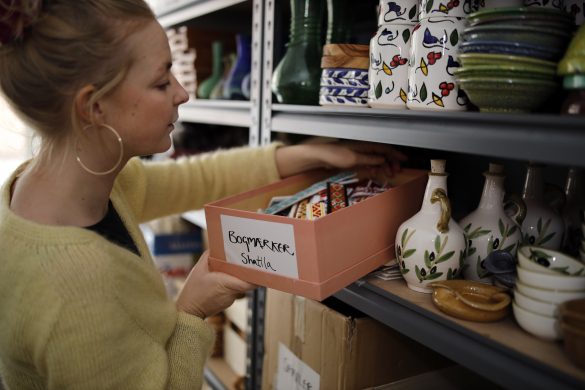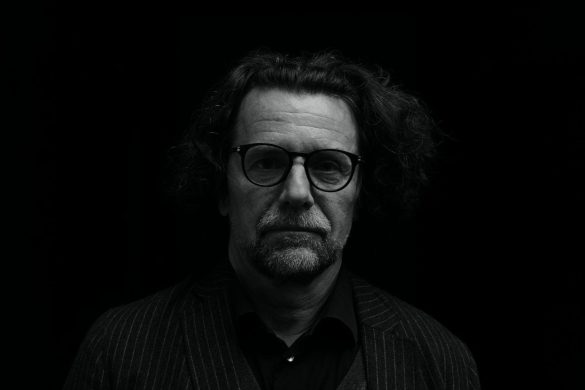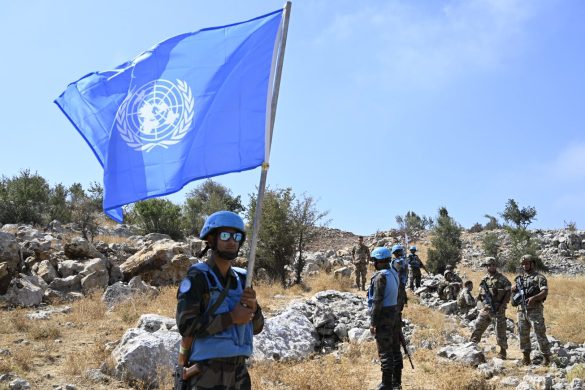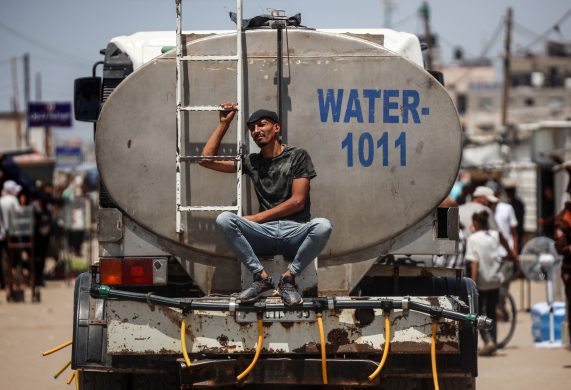At holde fred i krigstid er ikke en nem sag, men det søger indbyggerne at praktisere i Neve Shalom, som består af 30 jødiske og 30 palæstinensiske familier – for de har valgt at leve i samme landsby og bestemmer alt i fællig som det eneste sted i Israel.
JERUSALEM, 24 July 2014 (IRIN): The sixty families are determined not to be driven apart by even the most extreme circumstances; the sign pointing to a bomb shelter is written in three languages – English, Arabic and Hebrew.
Equidistant (lige langt) from Tel Aviv and Jerusalem on a hilltop near the border with the West Bank, residents of the village called Neve Shalom and Wahat al-Salam (Oasis of Peace in Hebrew and Arabic) choose to live side by side in Israel’s only truly mixed community.
The 30 Israeli Jewish and 30 Palestinian families have resolved not to let the latest hostilities turn neighbour against neighbour.
“These times of heightened violence actually really bring the village together,” said Bob Mark, a Jewish Israeli who taught at Neve Shalom’s primary school for 23 years.
“You will find the village demonstrating together,” he added.
While the residents have differing views on the solution to the country’s woes they all agree that the killing must stop.
Coexistence is daily life
The cooperative village, formed in the late 1970s, is an anomaly in a country where even the handful of technically mixed cities and towns tend to be largely segregated, with Jewish and Palestinian citizens of Israel (commonly called Israeli Arabs) attending separate schools.
Coexistence is daily life here; decisions are made collectively, the children study in both Arabic and Hebrew and all prospective residents are required to attend a special training session on conflict resolution.
Maintaining the spirit of togetherness is made harder by the sirens and the sounds of bombs that pierce the small-town quiet.
Since the mid-June kidnapping and killing of three Israeli teenagers and the presumed revenge killing of a Jerusalem Palestinian teenager, violence has grown across Israel and the Occupied Palestinian Territory.
In an ongoing, two-week-long assault, 718 Palestinians have been killed in the Gaza Strip – mostly civilians – while at least 34 Israelis have died – all but two of them soldiers.
At times the town has slipped into something approaching a collective sense of depression, punctured only by collective protests.
Usually they fast together
Usually during the Islamic holy month of Ramadan, the village breaks fast together once a week. This year, no one has quite felt up to it.
Israeli Arab Rita Boulos arrived in Neve Shalom from Jerusalem in 1989, prompted in large part by the 1987-1991 first intifada, when Palestinians violently rose up against Israeli occupation.
“I wanted to do something,” she said, “to bring the same words and way of life I was talking about into reality… and I wanted to raise my children in a different way, in a peaceful environment.”
She is angered and frustrated that peace still evades the country.
“This war is so brutal I can’t breathe any more,” she said, adding: “It is difficult for us to see how they brutally kill our people [Palestinians]. We are the same people [Palestinians in Israel and Gaza].”
Bucking the trend
Læs videre på
http://www.irinnews.org/report/100397/practicing-peace-in-wartime














